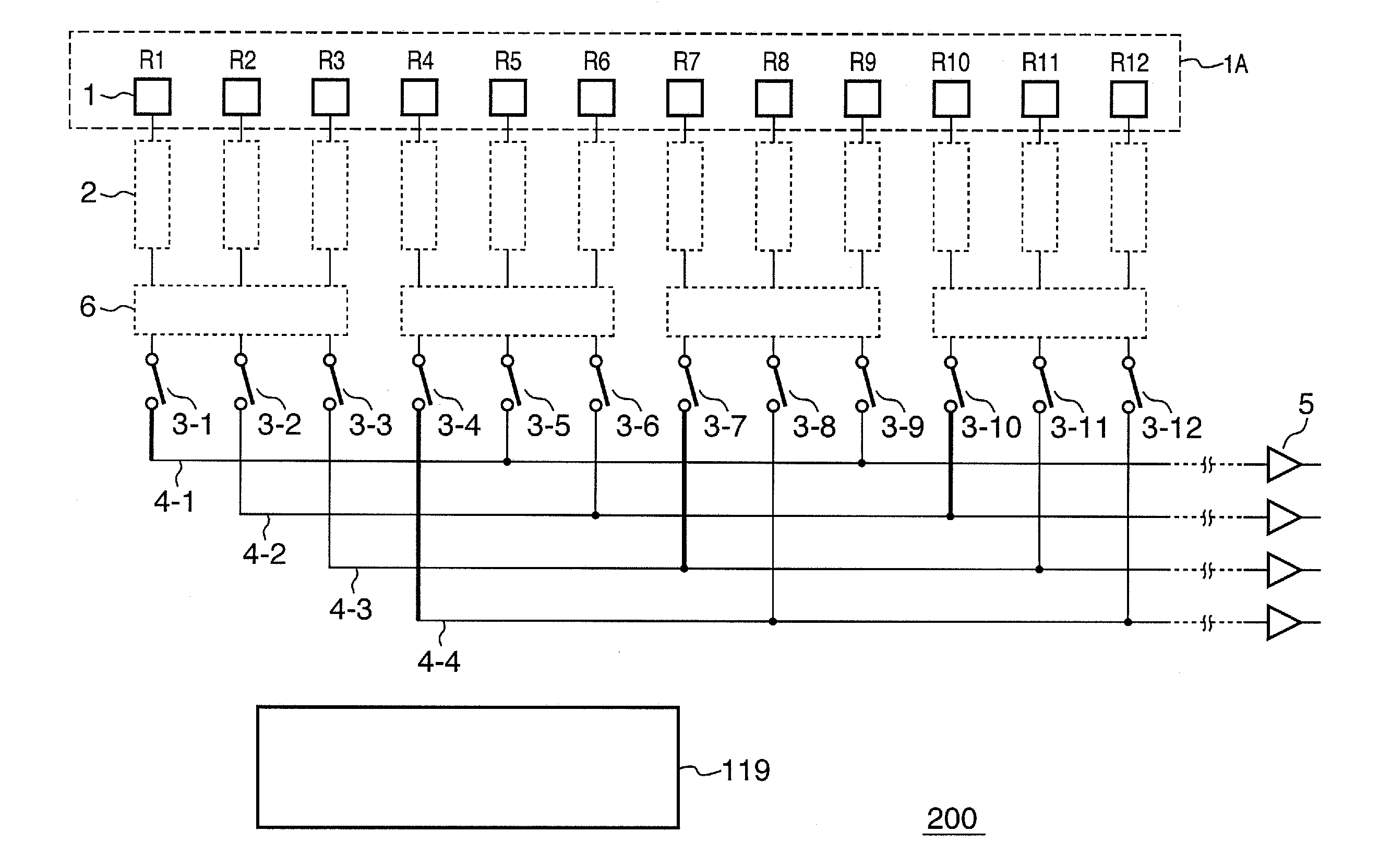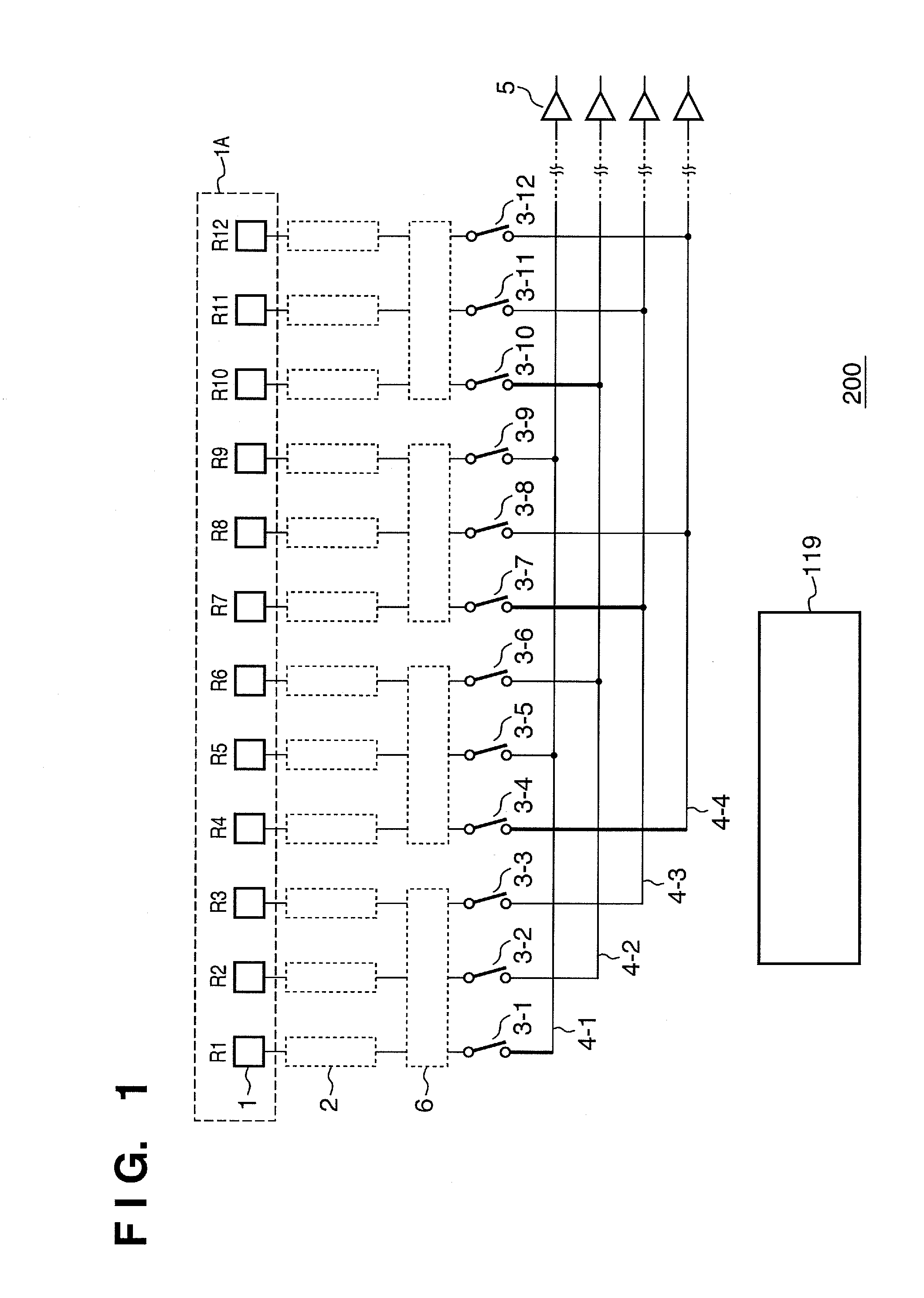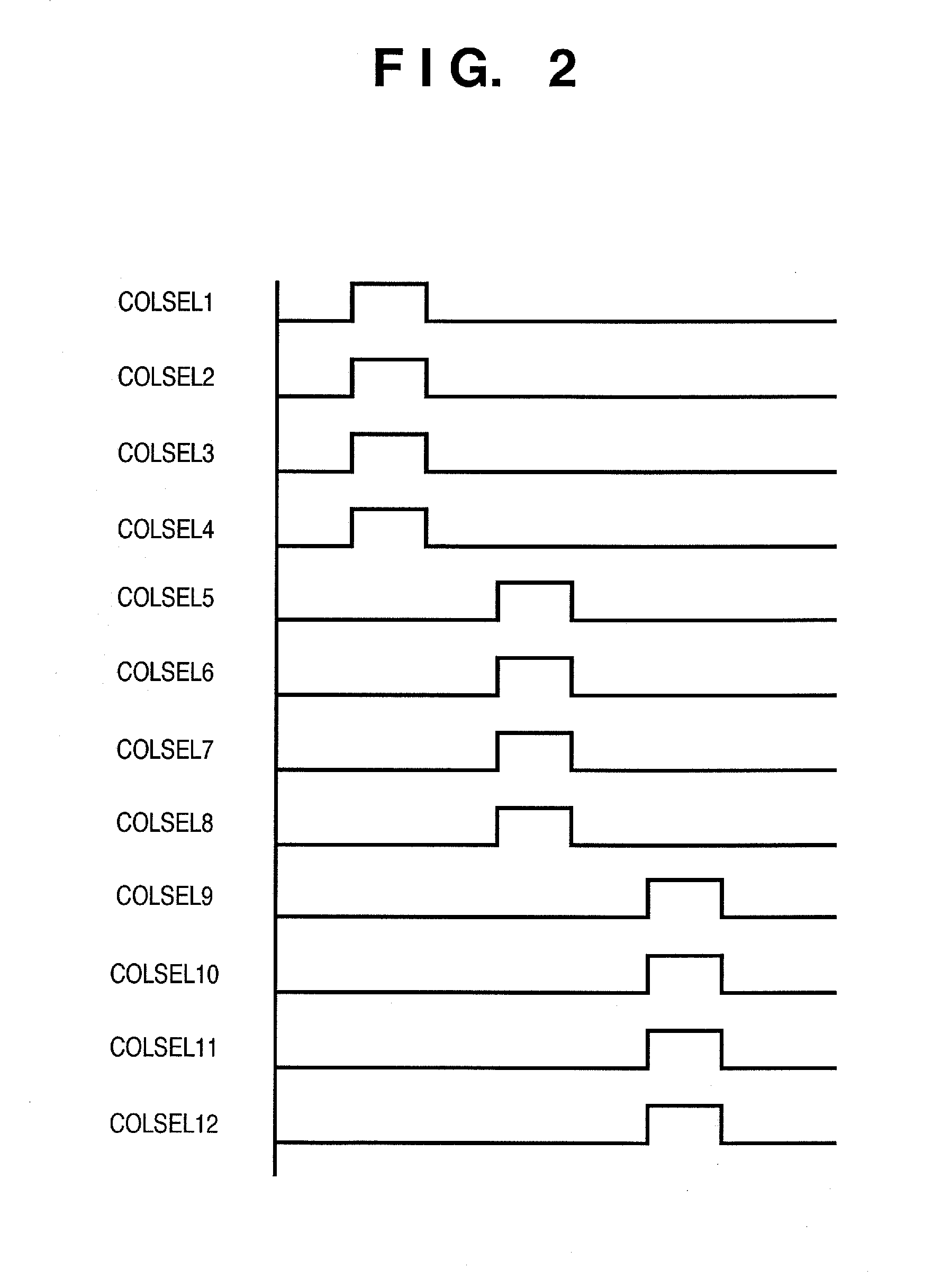Image sensor
a technology of image sensor and image, applied in the field of image sensor, can solve the problem that the image sensor may output an image with and achieve the effect of suppressing the production of periodical fixed pattern noise and improving the readout speed
- Summary
- Abstract
- Description
- Claims
- Application Information
AI Technical Summary
Benefits of technology
Problems solved by technology
Method used
Image
Examples
first embodiment
[0037]FIG. 1 is a circuit diagram showing the schematic arrangement of an image sensor according to the first embodiment of the present invention. An image sensor 200 provides a full pixel readout mode (second readout mode) in which the pixel signals of all pixels are read out, and a low resolution readout mode (first readout mode) in which one pixel signal is read out from each target readout area. The average readout mode will be exemplified below as the low resolution readout mode. The average readout mode here indicates a mode in which the average value of pixel signals of a plurality of pixels included in a target readout area is read out.
[0038]The image sensor 200 comprises a pixel array area 1A where a plurality of pixels 1 is arrayed. In the pixel array area 1A, the pixels 1 can be arranged to form a plurality of columns or one or a plurality of rows. FIG. 1 shows only pixels R1 to R12 of one row corresponding to a red filter. Each readout circuit 2 generates a pixel signal ...
second embodiment
[0063]FIG. 7 is a circuit diagram showing the schematic arrangement of an image sensor according to the second embodiment of the present invention. Color filters R, Gr, Gb, and B in the Bayer array are formed on pixels 100, and an area sensor is built by two-dimensionally arraying picture elements each of 2×2 pixels.
[0064]FIG. 8 is an equivalent circuit diagram of the pixel 100. A transfer pulse PTX, i.e., PTX1, PTX2, . . . controls a transfer switch 102. A reset pulse PRES, i.e., PRES1, PRES2, . . . controls a reset switch 103. A row selecting pulse PSEL, i.e., PSEL1, PSEL2, . . . controls a row selecting switch 105. A vertical scanning circuit 123 generates the transfer pulse PTX, reset pulse PRES, and row selecting pulse PSEL.
[0065]A full pixel readout operation in an image sensor 300 shown in FIG. 7 will be explained with reference to the timing chart of FIG. 9. The following description assumes that a set exposure time has elapsed and a photodiode 101 accumulates photocharges p...
third embodiment
[0074]FIG. 12 is a block diagram showing the schematic arrangement of an image sensor according to a preferred embodiment of the present invention. A camera 400 comprises a solid-state image sensor 1004 exemplifying image sensors according to the first and second embodiments.
[0075]A lens 1002 forms an optical image of an object on the image capturing plane of the image sensor 1004. The outer surface of the lens 1002 is covered with a barrier 1001 which protects the lens 1002 and also serves as a main switch. The lens 1002 has a stop 1003 to adjust the quantity of light passing through the lens 1002. An image capturing signal processing circuit 1005 performs various processes such as correction and clamping for image capturing signals output from the image sensor 1004 through a plurality of channels. An A / D converter 1006 performs analog-to-digital conversion of image capturing signals output from the image capturing signal processing circuit 1005 through a plurality of channels. A s...
PUM
 Login to View More
Login to View More Abstract
Description
Claims
Application Information
 Login to View More
Login to View More - R&D
- Intellectual Property
- Life Sciences
- Materials
- Tech Scout
- Unparalleled Data Quality
- Higher Quality Content
- 60% Fewer Hallucinations
Browse by: Latest US Patents, China's latest patents, Technical Efficacy Thesaurus, Application Domain, Technology Topic, Popular Technical Reports.
© 2025 PatSnap. All rights reserved.Legal|Privacy policy|Modern Slavery Act Transparency Statement|Sitemap|About US| Contact US: help@patsnap.com



